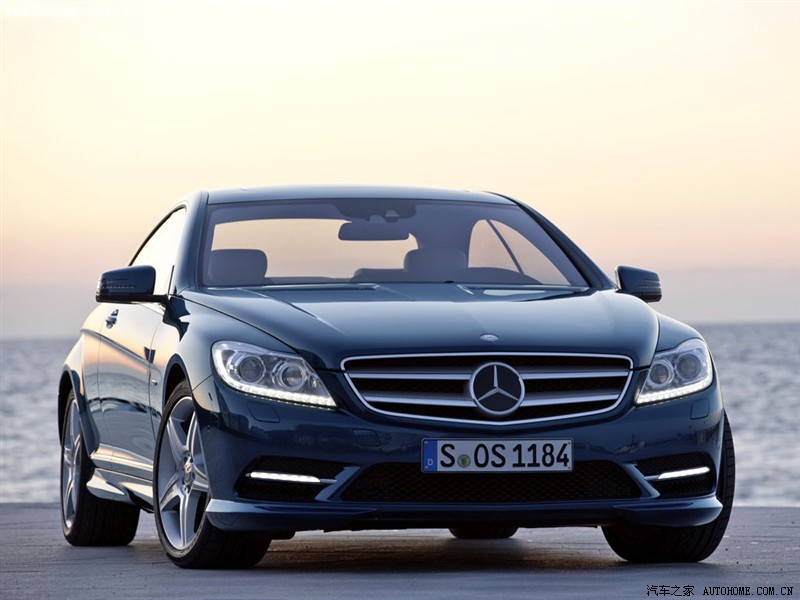-

kolesar - Poznavalec foruma
- Prispevkov: 2913
- Pridružen: Pe sep 15, 2006 3:24 pm
- Kraj: štajerska
-

CITROENAR ŠT 1 - Uporabnik
- Prispevkov: 1483
- Pridružen: To dec 16, 2008 1:17 am
phoebus je napisal/-a:Za tiste ki mislite da je S65 AMG krava: http://www.youtube.com/watch?v=syoBXsYBFvs
Saj ni nobeden rekel, da je to krava, in četudi je bil prvi AMG S65 in ne vem kakšna tradicija,... ja že ampak tisti absurd o katerem sem govoril je da je to v prvi vrsti LIMUZINA in ja konkreten avtomobil ima 612 KM, kar je spoštovanja vreden podatek (in je krasen avtomobil), ampak, kaj reče tip od 8.46 naprej (poglejte si) in se strinjam z njim, to ni športen avtomobil, s tem jaz ne bi nikoli tako norel, bi pa s npr. SLR-om (če smo ravno pri Mercedesih), tisto je pa druga zadeva in če ju primerjamo vidimo koliko je ura in tam se pokaže PRAVI NAMEN AVTOMOBILA, O TEM SEM GOVORIL in me nič ne gane, če je bil prav S klasa prvi AMG, ne hvala imam rajši normalno S-klaso s vso možno opremo in kraljevskim udobjem - POD SLEDNJE JAZ POJMUJEM POJEM LIMUZINA IN S KLASA V PRVI VRSTI TO JE. In naredit AMG iz take cestne križarke je tisti absurd.
Se že prav ponavljam
Brez zamere in lp
Sir Issac Newton: "To, kar vemo je le kaplja v morje."
Blaise Pascal: "Človekova veličina je v misli."
James Dean: "Dream as if you`ll live forever and live as if you`ll die today."
Spock: "Live long and prosper."

Blaise Pascal: "Človekova veličina je v misli."
James Dean: "Dream as if you`ll live forever and live as if you`ll die today."
Spock: "Live long and prosper."

-

simply - Mojster foruma
- Prispevkov: 3065
- Pridružen: Sr nov 30, 2005 7:03 pm
- Kraj: Nova Gorica
Pač nekateri se ne strinjamo s teboj. 
Res pa je, da francozi/italijani takšnih avtomobilov nimajo - oziroma jih niti ne potrebujejo.
Podobna zadeva je npr. Golf V v UK. Ker sem večkrat v LND so "edini" Golfi, ki jih opažam GTI-ji, TDIjev je zelo malo. To je za naše razmere nepojemljivo.
Prav tako BMW npr. serija 3. Pri nas so v večini 320d, v UK pa močnejše različice.
Res pa je, da francozi/italijani takšnih avtomobilov nimajo - oziroma jih niti ne potrebujejo.
Podobna zadeva je npr. Golf V v UK. Ker sem večkrat v LND so "edini" Golfi, ki jih opažam GTI-ji, TDIjev je zelo malo. To je za naše razmere nepojemljivo.
Prav tako BMW npr. serija 3. Pri nas so v večini 320d, v UK pa močnejše različice.
-

martin_krpan - Mojster foruma
- Prispevkov: 11222
- Pridružen: Sr feb 22, 2006 8:26 pm
- Kraj: Ribnica
2010 S400 Hybrid (US verzija)
http://www.blogcdn.com/www.autoblog.com ... ew2010.jpg
http://www.blogcdn.com/www.autoblog.com ... ew2010.jpg
http://www.blogcdn.com/www.autoblog.com ... ew2010.jpg
http://www.blogcdn.com/www.autoblog.com ... ew2010.jpg
http://www.blogcdn.com/www.autoblog.com ... ew2010.jpg
http://www.blogcdn.com/www.autoblog.com ... ew2010.jpg
http://www.blogcdn.com/www.autoblog.com ... ew2010.jpg
http://www.blogcdn.com/www.autoblog.com ... ew2010.jpg
http://www.blogcdn.com/www.autoblog.com ... ew2010.jpg
http://www.blogcdn.com/www.autoblog.com ... ew2010.jpg
http://www.blogcdn.com/www.autoblog.com ... ew2010.jpg
http://www.blogcdn.com/www.autoblog.com ... ew2010.jpg
http://www.blogcdn.com/www.autoblog.com ... ew2010.jpg
http://www.blogcdn.com/www.autoblog.com ... ew2010.jpg
http://www.autoblog.com/2010/04/08/2010 ... 00-review/
http://www.blogcdn.com/www.autoblog.com ... ew2010.jpg
http://www.blogcdn.com/www.autoblog.com ... ew2010.jpg
http://www.blogcdn.com/www.autoblog.com ... ew2010.jpg
http://www.blogcdn.com/www.autoblog.com ... ew2010.jpg
http://www.blogcdn.com/www.autoblog.com ... ew2010.jpg
http://www.blogcdn.com/www.autoblog.com ... ew2010.jpg
http://www.blogcdn.com/www.autoblog.com ... ew2010.jpg
http://www.blogcdn.com/www.autoblog.com ... ew2010.jpg
http://www.blogcdn.com/www.autoblog.com ... ew2010.jpg
http://www.blogcdn.com/www.autoblog.com ... ew2010.jpg
http://www.blogcdn.com/www.autoblog.com ... ew2010.jpg
http://www.blogcdn.com/www.autoblog.com ... ew2010.jpg
http://www.blogcdn.com/www.autoblog.com ... ew2010.jpg
http://www.blogcdn.com/www.autoblog.com ... ew2010.jpg
http://www.autoblog.com/2010/04/08/2010 ... 00-review/
Kobilica:
http://www.avtomobilizem.com/forum/viewtopic.php?f=7&t=88076&start=0
http://www.avtomobilizem.com/forum/viewtopic.php?f=7&t=88076&start=0
-

martin_krpan - Mojster foruma
- Prispevkov: 11222
- Pridružen: Sr feb 22, 2006 8:26 pm
- Kraj: Ribnica
Prenovljeni CL (S coupe) 63 AMG razkrit:
http://www.spyshots.nl/userfiles/image/ ... 205947.JPG
http://www.spyshots.nl/userfiles/image/ ... 205948.JPG
http://www.spyshots.nl/SpyShots/Opnieuw ... G_facelift
http://www.spyshots.nl/userfiles/image/ ... 205947.JPG
http://www.spyshots.nl/userfiles/image/ ... 205948.JPG
http://www.spyshots.nl/SpyShots/Opnieuw ... G_facelift
Kobilica:
http://www.avtomobilizem.com/forum/viewtopic.php?f=7&t=88076&start=0
http://www.avtomobilizem.com/forum/viewtopic.php?f=7&t=88076&start=0
-

martin_krpan - Mojster foruma
- Prispevkov: 11222
- Pridružen: Sr feb 22, 2006 8:26 pm
- Kraj: Ribnica
-

Zois - Uporabnik
- Prispevkov: 988
- Pridružen: Ne mar 04, 2007 4:00 pm
- Kraj: Slovenska Bistrica
-

martin_krpan - Mojster foruma
- Prispevkov: 11222
- Pridružen: Sr feb 22, 2006 8:26 pm
- Kraj: Ribnica
-

esem - Moderator foruma
- Prispevkov: 9988
- Pridružen: Ne mar 27, 2005 6:35 am
- Kraj: Ljubljana pri Kozarjah
Obupne fotke. Fotograf je uspel tako osvetljevat in ujet kote (od zadaj), da je vse izmaličeno (ter precej grdo). V resnici bo precej lepše in brez teh "dosežkov". Pri toliko kvalitetnih fotografih je to precej čudno, še posebej za MB. Kao nova prepoznavnost ali samo nesposobnost, tudi in predvsem tistega, ki je fotke odobril (in najel fotografa)?
Zadnjič spremenil esem, dne Če jul 08, 2010 5:08 pm, skupaj popravljeno 1 krat.
-

tomson - Uporabnik
- Prispevkov: 1386
- Pridružen: Po sep 19, 2005 9:21 pm
- Kraj: LJ / MB
-

IcEm4n - Mojster foruma
- Prispevkov: 6436
- Pridružen: Če jun 22, 2006 11:17 am
-

CITROENAR ŠT 1 - Uporabnik
- Prispevkov: 1483
- Pridružen: To dec 16, 2008 1:17 am
EEEE fantje, saj ne da bi najedal, ampak, lepo bi bilo, če bi to s CL-om preselili v njegovo temo in tam naprej debatirali o CL-u:
http://www.avtomobilizem.com/forum/viewtopic.php?t=39968
Hvala
Lp
http://www.avtomobilizem.com/forum/viewtopic.php?t=39968
Hvala
Lp
Sir Issac Newton: "To, kar vemo je le kaplja v morje."
Blaise Pascal: "Človekova veličina je v misli."
James Dean: "Dream as if you`ll live forever and live as if you`ll die today."
Spock: "Live long and prosper."

Blaise Pascal: "Človekova veličina je v misli."
James Dean: "Dream as if you`ll live forever and live as if you`ll die today."
Spock: "Live long and prosper."

-

IcEm4n - Mojster foruma
- Prispevkov: 6436
- Pridružen: Če jun 22, 2006 11:17 am
-

CITROENAR ŠT 1 - Uporabnik
- Prispevkov: 1483
- Pridružen: To dec 16, 2008 1:17 am
Lej tu ni kaj filozofirat, model se zaenkrat uradno še vedno imenuje CL in ne S-Coupe, poleg tega ima pa tudi svojo temo tko da mislim, da je o tem zaenkrat debatirat odveč. 
Lp
Lp
Sir Issac Newton: "To, kar vemo je le kaplja v morje."
Blaise Pascal: "Človekova veličina je v misli."
James Dean: "Dream as if you`ll live forever and live as if you`ll die today."
Spock: "Live long and prosper."

Blaise Pascal: "Človekova veličina je v misli."
James Dean: "Dream as if you`ll live forever and live as if you`ll die today."
Spock: "Live long and prosper."

-

martin_krpan - Mojster foruma
- Prispevkov: 11222
- Pridružen: Sr feb 22, 2006 8:26 pm
- Kraj: Ribnica
CL63 in CL65 AMG uradno







http://www.autoblog.com/2010/07/24/2011 ... mptresses/







AMG 5.5-LITER V8 BITURBO ENGINE
Performance, innovation and efficiency in perfect harmony
July 24, 2010
Increased performance and torque, reduced fuel consumption and exhaust emissions - these qualities are perfectly united in the new AMG 5.5-liter biturbo engine. Mercedes-AMG is confronting the challenges of the future, and demonstrating that dynamic performance can be perfectly combined with fuel economy. The result: a maximum output (with the optional AMG Performance Package) of up to 563 hp and 664 lb-ft of torque.
The new AMG 5.5-liter biturbo engine combines performance, innovation and efficiency to a previously unknown extent. This is made possible by a unique combination of innovative high-tech systems such as direct gasoline injection, twin turbochargers, air/water intercooling and the Controlled Efficiency stop/start function. The 2011 AMG CL models will be in U.S. showrooms this November.
Mercedes-AMG is systematically following the trend towards increasing efficiency: with a displacement of 5461 cc it is precisely 747 cc below the 6208 cc of the naturally aspirated AMG 6.3-litre V8 engine. Nevertheless, it develops more output and torque. The 2011 CL63 AMG develops a peak output of 536 hp and maximum torque of 590 lb-ft. In conjunction with the AMG Performance Package these figures increase to 563 hp and 664 lb-ft. The torque curve in particular shows that no other engine in this power class is able to match the figures delivered by the new AMG biturbo motor.
Despite an increase in horsepower and torque as compared to the naturally aspirated V8, AMG engineers have been able to reduce fuel consumption and CO2 emissions considerably. With an estimated fuel savings of 27 percent, engine specialists consider this to be nothing less than a quantum leap. CO2 emissions have likewise been significantly reduced by approximately 30.
These improvements in efficiency and environmental protection have no negative effects on the car's performance. On the contrary, as the new AMG 5.5-liter V8 biturbo fully lives-up to AMG's brand commitment to "performance": the CL63 AMG accelerates from zero to 60mph in 4.4 seconds, and has a top speed of 155 mph (electronically limited). With the AMG Performance package, the highperformance Coupé reaches the 60 mph mark in 4.3 seconds and reaches a top speed of 186 mph (electronically limited).
Combination of twin turbocharging and direct gasoline injection
Mercedes-AMG is presenting an attractive high-tech package with its combination of biturbo charging and direct gasoline injection with spray-guided combustion. The innovative injection technology brings distinct advantages to fuel consumption and exhaust emissions, thanks to higher thermodynamic efficiency. Particularly fast and precise piezo-electric injectors spray the fuel into the combustion chambers, ensuring a homogenous fuel/air mixture and highly effective combustion. An electric low-pressure pump delivers the fuel from the tank to a high-pressure pump in the trunk with a pressure of 87 psi. The fuel pressure in the highpressure rail is controlled between 1,500 and 3,000 psi on a fully variable and demand-related basis.
Two turbochargers and efficient air/water intercooling
Two turbochargers located next to the cylinder banks supply the eight cylinders with fresh air. At their maximum speed of 185,000 rpm under full load, the two turbochargers force 3,860 lbs into the combustion chambers per hour. The maximum charge pressure is 14.5 lbs, and 18.8 bar with the AMG Performance package. Thanks to their specific, compact construction - the turbine housings are welded to the exhaust manifold - there are significant space advantages and the catalytic converters also heat up more rapidly.
The new AMG V8 is the first turbocharged engine to dispense with the usual blow-off valve. This innovative solution enables the compressor housing to be made extremely compact. To ensure agile responsiveness with no time lag, all the air ducts in the intake tract are as short as possible. The wastegate valve, which reduces the pressure in the exhaust system during negative load changes, is vacuum-controlled via an electropneumatic converter. This allows dethrottling under partial loads, which in turn lowers the fuel consumption.
Like the existing AMG 6.0-litre V12 biturbo engine, the new eight-cylinder directinjection unit uses very efficient air/water intercooling. The low-temperature cooler with its water circulation is space-savingly accommodated within the V of the cylinder banks. It effectively cools down the intake air compressed by the turbochargers before it enters the combustion chambers, and maintains a constantly low intake temperature under full load. A large radiator at the car's front end ensures metered cooling of the water circulating in the low-temperature circuit. This guarantees a high output and torque yield in all ambient temperatures and operating conditions.
Extremely short charge-air ducting makes for outstanding responsiveness. The stainless steel pressure pipes for the fresh and charge air are produced by the hydroforming process, have a wall thickness of only 0.03 inches and are designed for very low pressure loss.
Aluminum crankcase with Silitec cylinder liners
The crankcase of the new AMG 5.5-liter V8 biturbo engine is made of diecast aluminum. The low (dry) engine weight of just 450 lbs is the result of uncompromising lightweight construction methods, and leads to the car's very balanced weight distribution. The bearing cover for the main crankshaft bearings is of grey cast iron, and is bolted to the crankcase for high rigidity. Cast-in Silitec cylinder liners ensure that the eight pistons operate with low friction.
Drilled pulsation holes in the crankcase lead to a higher output and fuel savings under partial load: above the bearing blocks there are longitudinally drilled holes which connect adjacent crankcase cavities. Normally the upward and downward movement of the pistons causes air to be forced into and extracted from the sump, which leads to increased internal friction losses and therefore a reduction in output. The pulsation holes prevent this by ensuring effective pressure compensation between the cavities.
The forged crankshaft of high-grade 38MnS6BY steel alloy rotates in five main bearings, has eight counterweights and has been optimized with respect to torsional rigidity, inertia, low rotating masses and a long operating life. A twomass viscous damper mounted at the front reliably eliminates vibrations. Each connecting rod journal on the crankshaft carries two forged, cracked connecting rods. In the interests of low mechanical friction and high wear resistance, the lightweight pistons have a metallic contact surface. Pressure-controlled oil-spray nozzles in the crankcase ensure that the highly stressed piston crowns are efficiently cooled.
Four-valve technology with variable camshaft adjustment
Perfect charging of the combustion chambers is ensured by large intake and exhaust valves, of which there are four per cylinder. The exhaust valves, which are subject to high thermal loads, are hollow and sodium-cooled. Four overhead camshafts operate the 32 valves via low-maintenance, low-friction cam followers. The infinitely variable camshaft adjustment with a range of 40 degrees on the intake and exhaust sides depends on the engine load and engine speed, leading to outstanding output and torque values. This also results in consistent idling at a low speed.
Depending on the engine speed, valve overlap can be varied for the best possible fuel/air supply to the combustion chambers and efficient removal of the exhaust gases. The variable camshaft adjustment is carried out electromagnetically via four pivoting actuators, and is controlled by the engine control unit. The camshafts are driven by three high-performance silent chains, which have considerable advantages in noise comfort compared to cylinder roller chains.
Efficient oil supply and water cooling
Efficient oil delivery under all load and operating conditions is ensured by an oil pump with an electrically controlled compression stage. The oil pressure can be varied between 29 and 48 psi, which has advantages in terms of friction and fuel consumption. An extraction stage integrated into the oil pump for the two turbochargers prevents oil from being mixed into the charge air and exhaust gases, thereby helping to reduce emissions even further. Both the sump and the extraction point have been optimized for maximum lateral acceleration and efficient lubrication. The oil capacity is 11 quarts.
The combined water/oil cooling system is a particularly innovative solution: initially the engine oil only flows through the oil/water heat exchanger. If the cooling performance of the very compact cooler is insufficient, the flow is directed through the external engine oil/air cooler by an oil thermostat. The advantage of this system is that the engine oil warms up (via hot engine coolant) more rapidly. A selectable water thermostat ensures rapid warming of the coolant when starting the engine and driving off.
The engine coolant is cooled using the particularly effective crossflow principle. There is a transverse flow of coolant through both the crankcase and the cylinder heads. Additional cooling slots in the cylinder head ensure more efficient cooling of the combustion chambers, which has advantages during combustion: it enables earlier ignition timings to be chosen without incurring the risk of knocking.
Highly efficient engine electronics for every function
All the engine functions are executed and controlled by a particularly efficient Bosch MED 17.7.3. control unit. This state-of-the-art engine computer not only controls the direct gasoline injection, charge pressure, camshaft adjustment and variable oil supply, but also communicates with all the other onboard control units. The microprocessor has more than 30,000 different parameters and functions stored in its memory, and is able to perform up to 260 million individual operations per second. To reduce the load on the engine control unit, the eight individual ignition coils have an integral electronic module known as an ignition amplifier at each cylinder. These ensure a strong ignition spark at all engine speeds and under all load conditions. Eight highvoltage powerstages are responsible for highly precise fuel distribution to the piezoelectric injectors.
Effective emissions technology with new catalytic converter boxes
The requirements for the exhaust system of the new AMG 5.5-liter V8 biturbo engine were complex: low exhaust emissions, compliance with country-specific standards and a characteristic AMG engine sound. The CL63 AMG complies with all the current EU-5 emission standards, as well as meeting all the requirements of the US market (LEV-II standard, On-Board Diagnosis II and lambda sensor diagnosis).
The turbochargers are welded to the exhaust manifolds, while air gap-insulated manifolds with a wall thickness of only 0.04 inches ensure a rapid catalytic converter response. For efficiency and to save space, this concept has a tandem catalytic converter housing on each side of the vehicle: adjacent to the firewall, two thin-walled ceramic substrates are grouped into each housing. This solution makes the previous, additional underbody catalytic converters unnecessary. The two ceramic substrates differ to ensure rapid and efficient emissions control: the front one is coated with palladium, while the rear one has a bimetal coating of palladium and rhodium. One lambda sensor per row of cylinders is located in front of each catalytic converter housing, and there is a lambda diagnostic sensor between each of the two thin-walled substrates.
The lambda sensors are necessary for demand-related lambda control. In all operating conditions, the components of the intake mixture can be precisely controlled to avoid damaging the catalytic converters. This also benefits fuel consumption under full load, as the mixture can be leaner than in engines without this control system.
Twin-pipe AMG sports exhaust system for a characteristic sound signature
The twin-pipe AMG sports exhaust system has a pipe cross-section of 2.76 inches from the manifolds to the rear silencers. When designing the sound, the aim was to create a perfect synthesis of aggressiveness and the comfort on long journeys that is the hallmark of a Mercedes. The goal of the developers was to achieve an emotional experience when accelerating and rev-matching, but unobtrusiveness at constant speeds. Unpleasant frequencies or droning noises were effectively eliminated during a series of painstaking tests. The sports exhaust system emits a sonorous eight-cylinder sound that is typical of AMG, while the striking chrome twin tailpipes feature a new design.
http://www.autoblog.com/2010/07/24/2011 ... mptresses/
Kobilica:
http://www.avtomobilizem.com/forum/viewtopic.php?f=7&t=88076&start=0
http://www.avtomobilizem.com/forum/viewtopic.php?f=7&t=88076&start=0
-

martin_krpan - Mojster foruma
- Prispevkov: 11222
- Pridružen: Sr feb 22, 2006 8:26 pm
- Kraj: Ribnica
S 63 AMG
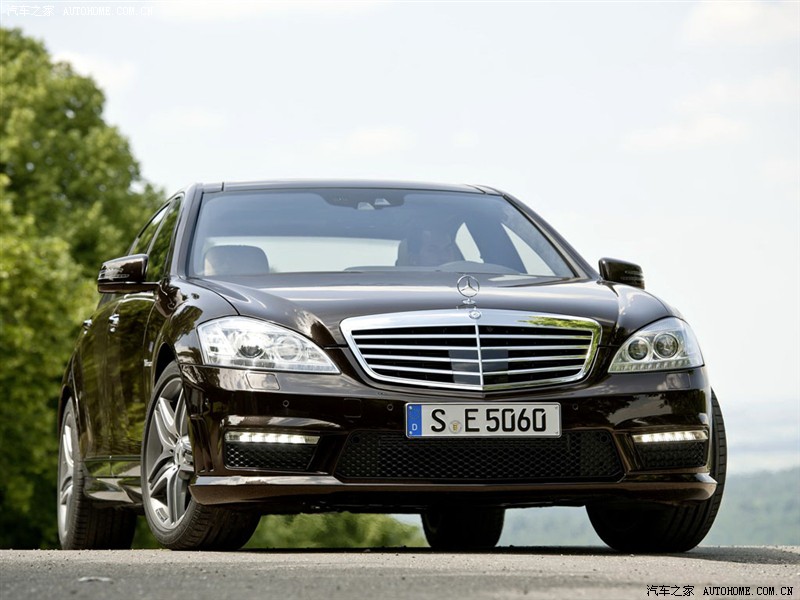


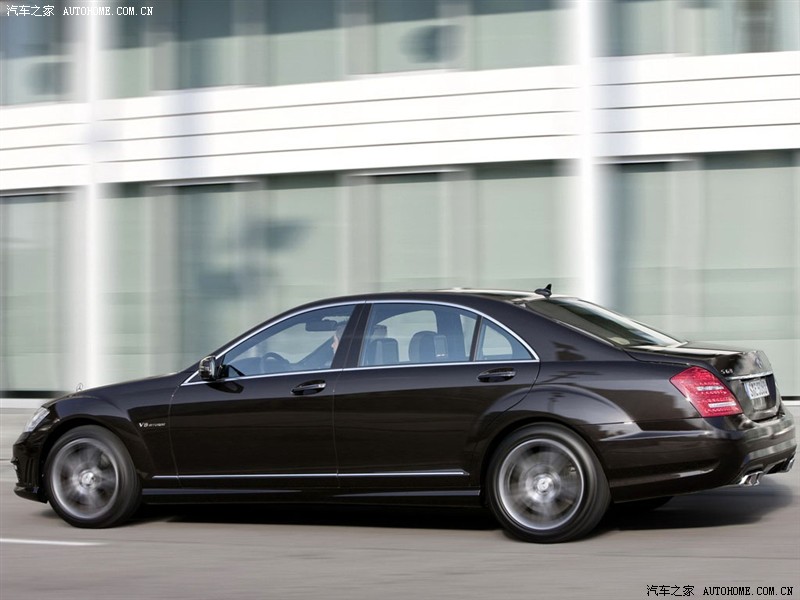
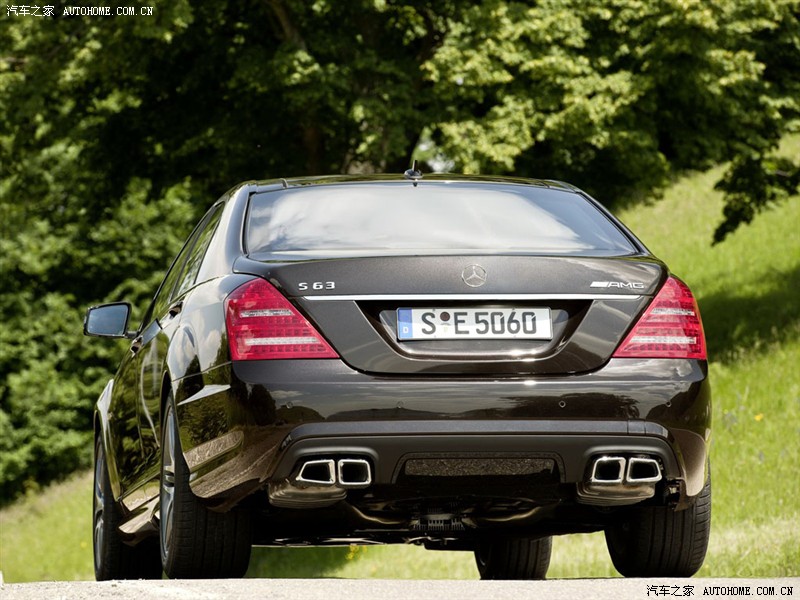
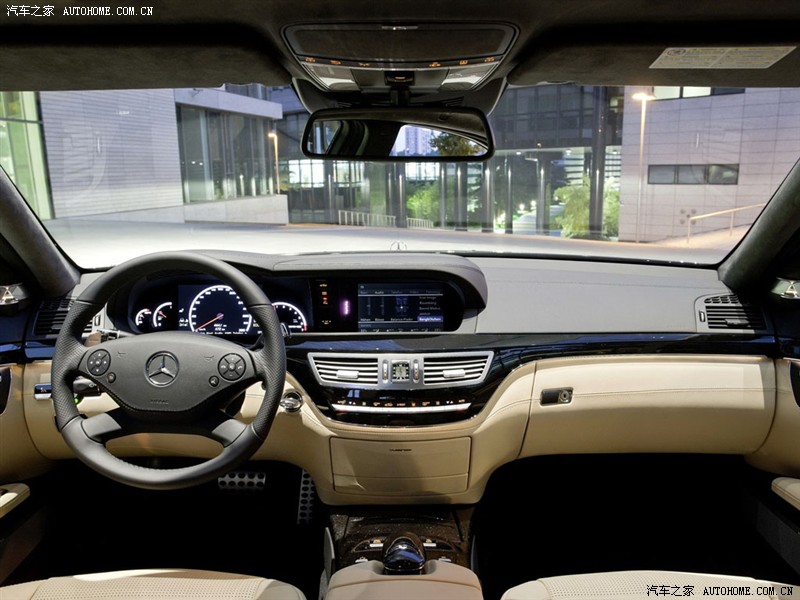
http://car.autohome.com.cn/pic/series/59.htm






http://car.autohome.com.cn/pic/series/59.htm
Higher performance, lower consumption – the new S 63 AMG with a power output of up to
420 kW (571 hp)
Affalterbach – The top-of-the-range S-Class V8 model, the Mercedes-Benz
S 63 AMG, is to benefit from a completely newly developed powertrain. The AMG 5.5-litre V8 biturbo engine with a peak output of up to 420 kW (571 hp) and a torque of up to 900 Nm, in combination with the unique AMG SPEEDSHIFT MCT 7-‑speed sports transmission, contributes towards a considerable reduction in consumption and emissions, while at the same time increasing maximum power and torque. With a fuel consumption of 10.5 litres per 100 kilometres (NEDC combined), the new high-performance Saloon not only undercuts its direct competitors – it is also more than 25 percent more economical in terms of its fuel consumption than the previous model with naturally aspirated V8 engine.
The new S 63 AMG marks the start of a new chapter in the "AMG Performance 2015" drive strategy: Mercedes-AMG is continuing this impressive story and is meeting its promise to continuously reduce both the fuel consumption and emissions of new models with the new engine/transmission combination – while reaching new heights with the central AMG brand value of "performance".
According to Ola Källenius, head of Mercedes-AMG GmbH: "We are heading into
a new era with the S 63 AMG: for the first time we have combined spray-guided direct petrol injection with biturbocharging and the start/stop system. Together with the AMG SPEEDSHIFT MCT 7-speed sports transmission, we have reduced both fuel consumption and emissions significantly – while at the same time
increasing output and torque."
The new AMG 5.5-litre V8 biturbo engine will play a significant role in the
Mercedes-AMG model strategy over the coming year. The unique AMG
SPEEDSHIFT MCT 7-speed sports transmission will also help to ensure that
future high-performance AMG vehicles benefit from an exciting and at the same economical transmission of power too. The new engine/transmission combination marks a further milestone in the successful history of Mercedes-AMG, which
began back in 1967.
Direct petrol injection with spray-guided combustion and twin
turbocharging
Designated internally as the M157, the new V8 engine is a prime example of
efficiency and features a whole host of impressive technological highlights: for the first time AMG is taking advantage of direct petrol injection with spray-guided combustion and piezo injectors. This technology enables improved fuel economy thanks to higher thermodynamic efficiency, which in turns leads to lower exhaust emissions. AMG has combined the spray-guided combustion with biturbocharging. Other highlights of the innovative, original eight-cylinder engine from Affalterbach include full aluminium crankcase, four-valve technology with variable intake valve timing, air/water charge air cooling, generator management and also standard Controlled Efficiency start/stop function. Compared with the AMG 6.3-litre naturally aspirated V8 engine with a displacement of 6208 cc, the new AMG 5.5-litre V8 biturbo engine achieves all this with a displacement of 5461 cc.
This high-tech package leads to a high output and torque yield, together with fuel consumption figures that are unrivalled in the competitive lineup. The AMG
5.5-litre V8 biturbo engine develops a peak output of 400 kW (544 hp) and maximum torque of 800 Nm. In conjunction with the AMG Performance package these figures are increased to 420 kW (571 hp) and 900 Nm. A look at the
performance diagrams shows that no other engine in this output class achieves the figures delivered by the new AMG biturbo. The major difference between the two performance classes is an increase in the maximum charge pressure from
1.0 to 1.3 bar. In addition, the engine cover of the S 63 AMG with the AMG
Performance package comes in genuine carbon fibre.
Quantum leap: fuel consumption reduced by more than 25 percent
With an NEDC fuel consumption of only 10.5 litres per 100 kilometres, the new
S 63 AMG is 3.9 litres more economical than the previous model powered by the naturally aspirated AMG 6.3-litre V8 – despite an increase in output of 14 kW
(19 hp) and 34 kW (46 hp) respectively, and in torque of 170 and 270 Nm. Engine specialists consider this achieved fuel saving of more than 25 percent to be
nothing less than a quantum leap. CO2 emissions have likewise been significantly reduced: at 244 grams per kilometre, the figure is almost 30 percent lower than for the previous model. Both performance variants have identical fuel consumption and CO2 figures.
With figures like these, the new S 63 AMG is not only considerably better than all its competitors, but also more fuel-efficient than much less powerful cars in this segment.
Sports car-level performance
At the same time the S 63 AMG delivers superior performance at sports car level: the high-performance saloon accelerates from zero to 100 km/h in 4.5 seconds, and has an electronically limited top speed of 250 km/h. The 100 km/h mark is reached in just 4.4 seconds with the AMG Performance package, with the top speed increased to an electronically limited 300 km/h.
It is not only the unrivalled torque delivery of this turbocharged eight-cylinder that makes the heart beat faster, as the agile responsiveness with no irritating charger delay leads to an effortlessness and dynamism previously unknown in this output class. All perfectly matched by the powerful, sonorous engine note. Moreover, this AMG high-performance engine naturally meets all the requirements with respect to smooth, quiet running and the comfort on long journeys that is to be expected of a Mercedes.
Key data at a glance:
S 63 AMG
Displacement
5461 cc
Bore x stroke
98.0 x 90.5 mm
Compression ratio
10.0:1
Output
400 kW (544 hp) at 5500 rpm
420 kW (571 hp) at 5500 rpm*
Max. torque
800 Nm at 2000 - 4500 rpm
900 Nm at 2250 - 3750 rpm*
at 2500 - 3750 rpm*
Engine weight (dry)
204 kg
Power/weight ratio
0.41 kg/hp 0.39 kg/hp*
Fuel consumption
NEDC combined
10.5 l/100 km
CO2 emissions
244 g/km
Acceleration 0 - 100 km/h
4.5 s
4.4 s*
Top speed**
250 km/h
300 km/h*
* with AMG Performance package; ** electronically limited
AMG SPEEDSHIFT MCT 7-speed sports transmission
Power is transferred by the AMG SPEEDSHIFT MCT 7-speed sports transmission used exclusively by AMG, which is already familiar from the SL 63 AMG and
E 63 AMG and combines high emotional appeal with outstanding driving
dynamics, impressive comfort and a high level of efficiency. The wet start-up clutch replaces a conventional torque converter, and helps to save fuel. The
exemplary fuel economy is also in large measure due to the standard start/stop function. This system is active in the transmission's Controlled Efficiency ("C") mode, and switches the eight-cylinder engine off when the car comes to a stop. In "C" mode the sports saloon always starts off in second gear, and the transmission shifts to the next, higher gears at a decidedly early stage. With its high torque at low engine speeds, the V8 engine encourages a smooth, effortless driving style.
The eight-cylinder biturbo engine also features the generator management system familiar from the E 63 AMG: whenever the engine is on the overrun or when
braking, kinetic energy is used to charge the battery rather than being wasted as heat in the usual way. In all other operating modes a combination of onboard network and generator management enables the generator to be kept at a low
voltage. This reduces the load on the engine and makes for fuel savings of around 0.15 litres per 100 kilometres according to the NEDC standard, and up to 0.2 l/100 km in city traffic with its frequent overrun and braking phases.
Engine production – tradition of hand-built excellence
Like all other AMG engines, the new eight-cylinder biturbo is assembled by
hand in the AMG engine shop taken into commission in 2002. Highly-qualified
technicians assemble the M157 according to the "one man, one engine"
philosophy, maintaining the very strictest quality standards. This painstaking care is attested to by the signature on the characteristic AMG engine plate.
Long tradition of powerful AMG V8 engines
Powerful eight-cylinder engines are an inseparable part of AMG's corporate
history. Established in 1967, the company immediately caused a stir with the 300 SEL 6.8 AMG which succeeded in taking second place at the 24-hour races at Spa-Francorchamps (Belgium). The AMG racing saloon was technically based on the Mercedes-Benz 300 SEL 6.3. With an engine output of 184 kW (250 hp) at 4000 rpm and a top speed of 220 km/h, this luxury V8 saloon was Germany's fastest regular production car at the time. Classic tuning as well as an enlarged
displacement from 6330 to 6835 cc resulted in an increase in output to 315 kW (428 hp) at 5500 rpm and in torque from 500 to 608 Nm.
A further milestone in the AMG engine story was the M117, the first eight-cylinder unit with four-valve technology. With a displacement of 5.6 litres,
265 kW (360 hp) and 510 Nm of torque, this V8 accelerated the Mercedes-Benz 300 CE 5.6 AMG to a top speed of 303 km/h in 1987. This made the coupé the fastest German car in series production, and American fans reverently christened it "The Hammer".
Another important engine in the history of AMG was the supercharged AMG
5.5-litre V8 introduced in 2001: the M113 K developed an output of up to 428 kW (582 hp) and torque of 800 Nm. The supercharged AMG 5.5-litre V8 in the SLR McLaren of 2003 was even more powerful – the M155 developed up to 478 kW (650 hp) and 820 Nm. 2005 saw the debut of the AMG 6.3-litre V8 engine;
depending on the model, the naturally aspirated, high-revving M156 developed up to 386 kW (525 hp) and 630 Nm. Exclusively reserved for the new SLS AMG, the likewise 6.3-litre M159 has a maximum output of 420 kW (571 hp) and maximum torque of 650 Nm.
Numerous victories in the "International Engine of the Year Awards"
The supercharged AMG 5.5-litre V8, the AMG 6.3-litre V8 and the AMG 6.0-litre V12 biturbo were all able to win the Best Performance Engine category in the
International Engine of the Year Awards. The AMG 6.3-litre V8 also won in 2009 and 2010 in the "Above 4 litres" class.
New AMG triple-spoke light-alloy wheels
In visual terms, the new S 63 AMG is distinguished by a number of subtle
touches: "V8 Biturbo" lettering on the mudguards points to the new powertrain. Also new are the AMG triple-spoke light-alloy wheels, painted in titanium grey and with a high-sheen finish, and fitted with 255/40 or 275/40 R 19 tyres. In the interior, the S 63 AMG boasts a newly designed AMG instrument cluster with
"AMG V8 Biturbo" starting screen. The standard PASSION leather upholstery has been enhanced with new, contrasting colour stitching.
A new range of attractive optional appointments is now also available for the
S 63 AMG: the Bang & Olufsen BeoSound AMG high-end sound system, developed especially for the S-Class, ensures an exceptional listening experience. With a
total output of 1200 watts, 15 loudspeakers, acoustic lens tweeters in the A and
B-pillars as well as a digital sound processor (DSP), it transforms the Saloon into a full-blown concert hall with perfect acoustics.
Active Lane Keeping Assist and Active Blind Spot Assist
The unique combination of innovative camera and radar-based driver assistance systems has been enhanced even further with immediate effect with a view to perfecting the vehicle's active and passive safety. The new Active Lane Keeping Assist comes into play when the S 63 AMG unintentionally strays over a solid
line on the right or left of a lane or on the outside of a bend. In such cases the Electronic Stability Program ESP® applies the brakes to the wheels on the
opposite side of the vehicle to prevent it from unintentionally straying from its lane.
Also new is the Active Blind Spot Assist, which warns the driver by displaying a red warning in the glass of the relevant exterior mirror when it detects that
changing lanes would be too dangerous. If the driver ignores the warning signal and a vehicle in an adjacent lane comes too close, the ESP® takes corrective
action by applying the brakes to the wheels on the opposite side of the vehicle.
Crosswind stabilisation, Torque Vectoring Brake and Direct-Steer system
The AMG sports suspension based on Active Body Control (ABC) provides
crosswind stabilisation as standard equipment: thanks to this function,
influences caused by crosswinds are compensated for, or – in the case of
strong gusts – reduced to a minimum. ABC compensates against the effect of crosswinds by adjusting the wheel load distribution within milliseconds, using the yaw-rate and lateral acceleration sensors of the ESP®.
Also making up the standard equipment is the Torque Vectoring Brake: when cornering, brief direct application of the brakes has an effect on the vehicle's
inner rear wheel so that the saloon corners precisely and under control at all times. The Torque Vectoring Brake is an additional feature of the Electronic
Stability Program and not only noticeably improves responsiveness but also
active handling safety in critical conditions. The driving experience is further heightened thanks to the Direct-Steer system: with its variable ratio depending
on steering angle, it helps to ensure a more direct response when cornering, and therefore more responsive handling – in brief: enhanced driving pleasure at the wheel of the Mercedes-AMG S-Class.
AMG high-performance braking system with double floating brake caliper
Based on the ADAPTIVE BRAKE system, the AMG high-performance braking
system continues to provide optimum fade resistance, deceleration and
sensitivity. The front axle features a double floating brake caliper. This exclusive technology combines the advantages of a sliding-caliper disc brake – reduced heat transfer to the brake fluid and clear advantages in terms of comfort thanks to the brake lining guide mechanism – with the efficiency of an extra large fixed caliper brake.
Exclusive optional extras are also available for the S 63 AMG from the AMG
Performance Studio:
* • AMG Performance package: increase in maximum power of 20 kW (27 hp) and maximum torque of 100 Nm, genuine carbon fibre AMG engine cover
* • AMG double-spoke forged wheels, painted in black with a mirror finish and fitted with 255/35 R 20 front and 275/35 R 20 rear tyres
* • AMG Performance steering wheel with Alcantara inserts in the grip areas
* • AMG trim in black piano lacquer/carbon fibre
The S 63 AMG is available in short or long-wheelbase versions, and will
celebrate its market launch at the end of September 2010. Prices at a glance:
* • S 63 AMG (short wheelbase): 128,800 euros (excl. VAT) / 143,752 euros (incl. 19% VAT)
* • S 63 AMG (long wheelbase): 127,200 euros (excl. VAT) / 151,368 euros (incl. 19% VAT)
The AMG Performance package costs 7900 euros (excl. VAT) / 9401 euros (incl. 19% VAT).
Top-of-the-range S-Class models from Mercedes-AMG appeal to customers worldwide
Exclusivity and dynamism, effortless superiority and high tech: both the S 63 AMG and the top-of-the-line V12 model, the S 65 AMG, embody all of these characteristics. Since their market launch some four years ago, the S-Class models from AMG have won the hearts of more than 10,000 customers around the world – turning them into the clear market leaders in the small yet highly exclusive high-performance luxury saloon segment. The twelve-cylinder S 65 AMG model now produces 463 kW (630 hp) and will also be celebrating its market launch in September. The vehicle has a sales price of 192,500 euros (excl. VAT) / 229,075 euros (incl. 19% VAT).
Kobilica:
http://www.avtomobilizem.com/forum/viewtopic.php?f=7&t=88076&start=0
http://www.avtomobilizem.com/forum/viewtopic.php?f=7&t=88076&start=0
-

CITROENAR ŠT 1 - Uporabnik
- Prispevkov: 1483
- Pridružen: To dec 16, 2008 1:17 am
WAW sam to lahko rečem ob tema dvema lepotcema, zunanjost in notranjost, tehnologija in performanske,.... 

Lp
Lp
Sir Issac Newton: "To, kar vemo je le kaplja v morje."
Blaise Pascal: "Človekova veličina je v misli."
James Dean: "Dream as if you`ll live forever and live as if you`ll die today."
Spock: "Live long and prosper."

Blaise Pascal: "Človekova veličina je v misli."
James Dean: "Dream as if you`ll live forever and live as if you`ll die today."
Spock: "Live long and prosper."

-

martin_krpan - Mojster foruma
- Prispevkov: 11222
- Pridružen: Sr feb 22, 2006 8:26 pm
- Kraj: Ribnica
Re: Mercedes razred S in CL facelift
Test CL63 AMG:
http://www.autoblog.com/2010/10/29/2011 ... ve-review/
http://www.blogcdn.com/www.autoblog.com ... review.jpg
http://www.blogcdn.com/www.autoblog.com ... review.jpg
http://www.blogcdn.com/www.autoblog.com ... review.jpg
http://www.blogcdn.com/www.autoblog.com ... review.jpg
http://www.blogcdn.com/www.autoblog.com ... review.jpg
http://www.blogcdn.com/www.autoblog.com ... review.jpg
http://www.blogcdn.com/www.autoblog.com ... review.jpg
http://www.autoblog.com/2010/10/29/2011 ... ve-review/
http://www.blogcdn.com/www.autoblog.com ... review.jpg
http://www.blogcdn.com/www.autoblog.com ... review.jpg
http://www.blogcdn.com/www.autoblog.com ... review.jpg
http://www.blogcdn.com/www.autoblog.com ... review.jpg
http://www.blogcdn.com/www.autoblog.com ... review.jpg
http://www.blogcdn.com/www.autoblog.com ... review.jpg
http://www.blogcdn.com/www.autoblog.com ... review.jpg
Kobilica:
http://www.avtomobilizem.com/forum/viewtopic.php?f=7&t=88076&start=0
http://www.avtomobilizem.com/forum/viewtopic.php?f=7&t=88076&start=0
-

simply - Mojster foruma
- Prispevkov: 3065
- Pridružen: Sr nov 30, 2005 7:03 pm
- Kraj: Nova Gorica
Re: Mercedes razred S in CL facelift
Kako se lahko skrije notranjost serije 6 proti temu. 
-

fantom - Stalni uporabnik
- Prispevkov: 689
- Pridružen: Pe jan 01, 2010 5:35 pm
Re: Mercedes razred S in CL facelift
škoda da nebo nikol moj 
Kdo je prisoten
Po forumu brska: Majestic-12 [Bot] in 15 gostov

